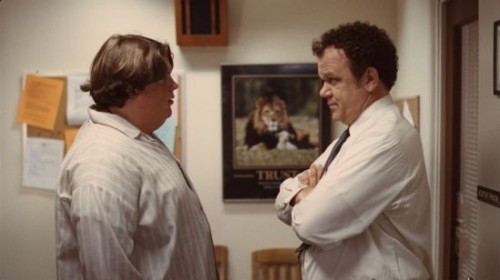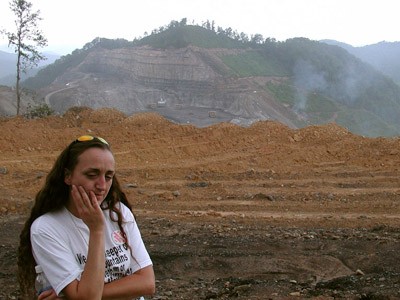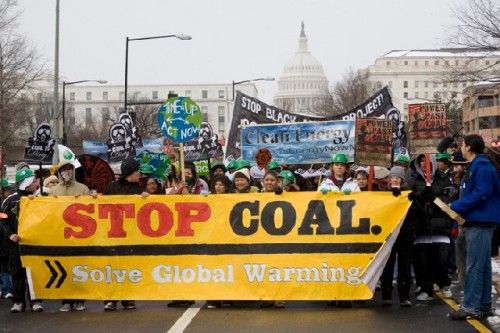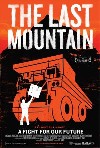Sundance Three
Watch Till You Drop
By: Jon Goldman - Feb 01, 2011
Monday, January 24
Today we see two films, one from Italy: Lost Kisses, about a young girl who is visited in a dream by the Madonna and is soon considered a saint because of this vision; and Terri a feature about an overweight high school student's quirky life.
Both are well performed, often very clever, and well written. They provide a slice of life of young people coming of age and the degrees of fallout that occurs for parents or care-givers. In Terri, the lead character lives with his Uncle, who is slowly developing signs of dementia (Creed Bratton of the popular American TV show The Office). Terri too exhibits outsider status, wears pajamas (tops as well as the more common bottoms) and has found guidance through an alliance with his principal played with subtlety and empathy by the great actor John C. Reilly.
Like Pariah, it is a look at those who don’t fit in and paints a portrait of a kind of well-grounded personality that far exceeds the maturity of the “adults” who surround them. In both cases, my young friend and host, Andrew, saw them as powerfully made films. They depict a world common to all teenagers and their general sense of coming to terms with adulthood.
While it is Monday, the entire festival seems lost in a haze as the many movies we have seen have begun to blur time and memory. This state of mental fallout is typical of intense viewing in such a short time. I am beginning to feel like the lead character Alex DeLarge at the end of A Clockwork Orange, when his eyes are peeled back and he is over exposed to films.
Luckily, the next film we see is Buck about which there is much buzz. It concerns the remarkable Buck Brannaman, a horseman’s horseman, a true-to life “horse-whisperer’ protégé of Ray Hunt, who was profiled in the Robert Redford movie of that fame. Redford appears as well, giving credence to the absolutely grounded Brannaman as he travels the West, nine months a year, holding clinics on horsemanship.
We meet him after the film, where it is obious that he is just as genuine as he is depicted in the film. It relates his transition from a traumatically abused child into skilled rodeo performer. He is an approachable, and articulate spokesmen for the relationship between humans and animals. Brannaman is truly inspirational. His message both in and out of the horse ring has simplicity, humor, earnestness and gentleness. It is reminiscent of Will Rogers and accordingly he seems to belong to another era.
This is a glimpse into his world, relationships and ability to tame and communicate with majestic animals. The film was a view into how he changes people’s lives as well works with the horses. I was not a horse person going into this film. Nor was I upon leaving the theatre. But I was a changed person having seen, first hand, the grace he bestowed on the audience.
We sit in the Owl Bar, talking to new friends and discuss what we have seen over the last several days. The conversation is conducted over a locally brewed India Pale Ale. Then it is back to what would turn out to be our last film at the Screening Room. It is The Last Mountain, a film by a group of Massachusetts filmmakers, some of whom I know personally. It is a beautifully filmed picture about the decimation of Appalachian Mountains in West Virginia where, for years, mountain top removal has devastated the Coal River Valley.
The film follows Bobby Kennedy Jr. of the RiverKeepers Alliance in his vigilant attempts to save the last mountain from the ravages of coalmining. It makes a forceful argument that companies like Massey Energy Corporation who explode these mountains leaving huge “moonscapes” behind and completely destroy the natural surroundings. They have been negligent of their stewardship of the environment and to surrounding communities.
The filmmakers advance solutions through the use of alternative energy sources like Wind Turbine farms. The film promotes the force of economically driven green technologies as being both environmentally friendly, and conservation-minded. But there are moments when it tends towards a screed making links between high rates of brain tumor in Pennsylvania among children and the region in West Virginia profiled in the film.
Kennedy and the filmmaker’s effective battle against this industry, while persuasive, never really explores the difficult questions surrounding the world’s increasing appetite for energy. It spotlights consumptive products and the simple fact that everyone in the audience contributes to that demand. This critical ecosystem that made up the veins of this energy rich place has been devastated, and no amount of alternative energy will bring back this unique environment.
It stands as further impetus for me as a filmmaker interested in raising questions about our next energy directions, with my own Oil in the Family, to stay in the fight. I met the film’s co-writer and editor who I have now convinced to edit my film. Again I am encouraged and inspired to continue to find the funds necessary to finish. This is a purpose for attending festivals like Sundance.
We dined at the exclusive Tree Room enjoying wonderful food while in Utah. Everyone is completely satisfied and tired having finally acclimated to the altitude. I walked back along the babbling brook, across a small bridge, to the cabin under a star-filled sky. As I looked back towards the white ridge above the little village it gives off a reflected glow from the illuminated, adjacent ski slope. Skiers are finishing their night runs and I can hear them schussing on a nearby slope. Another night in Sundance. The glow is both externalized and internalized.
Part One








